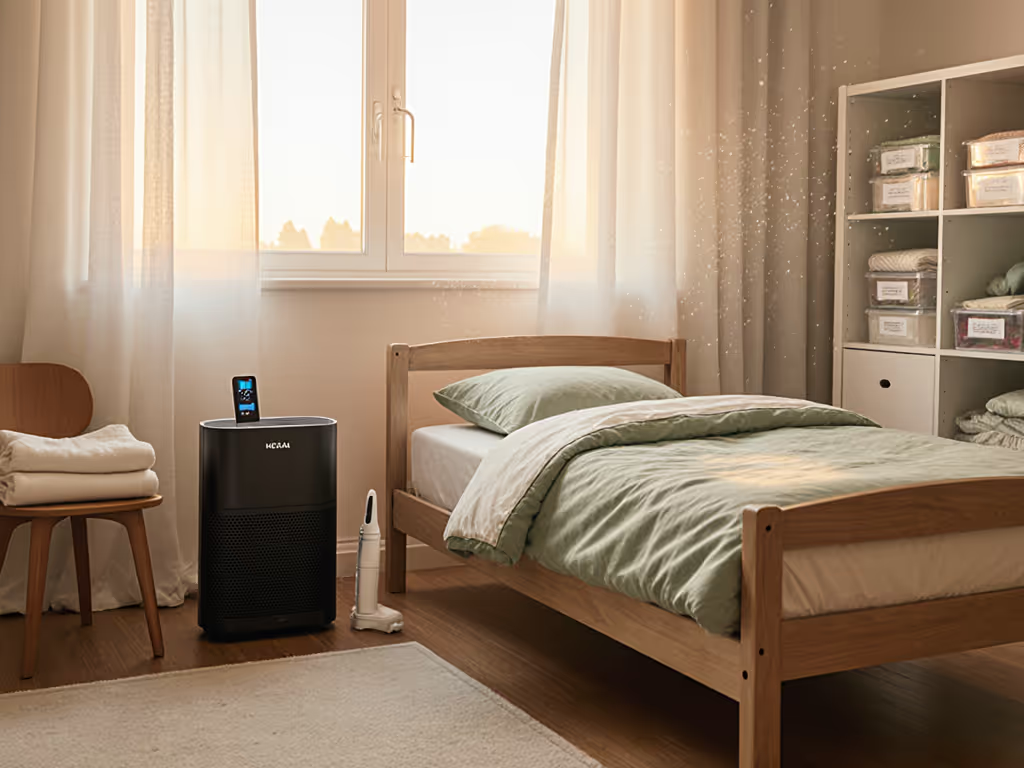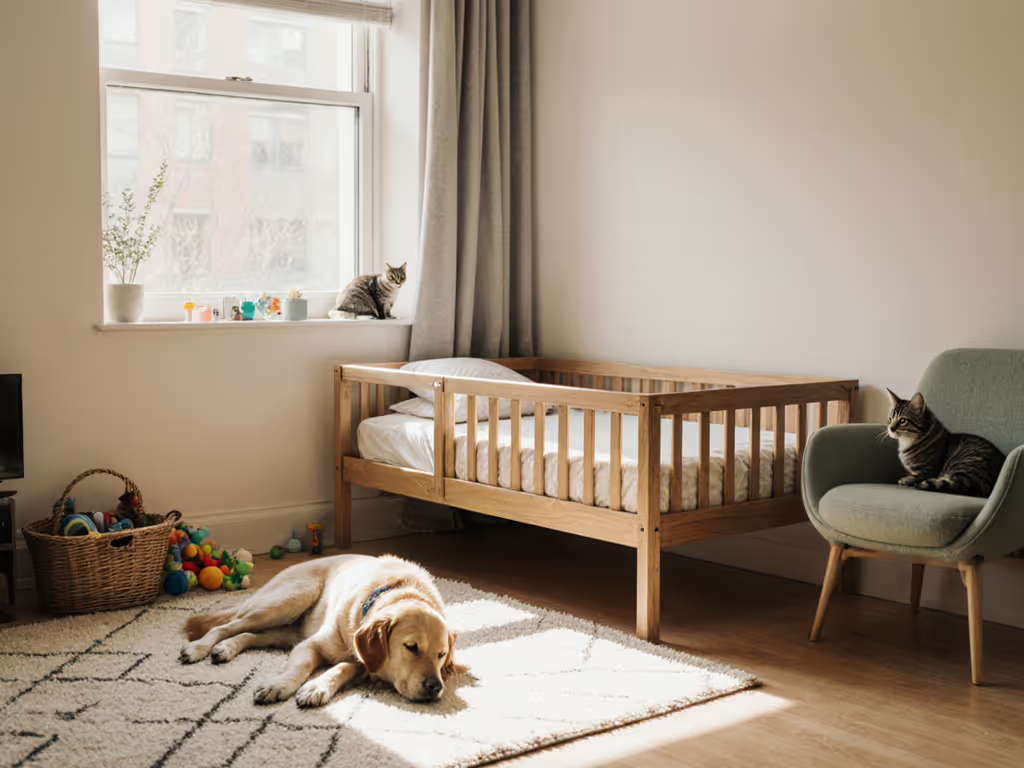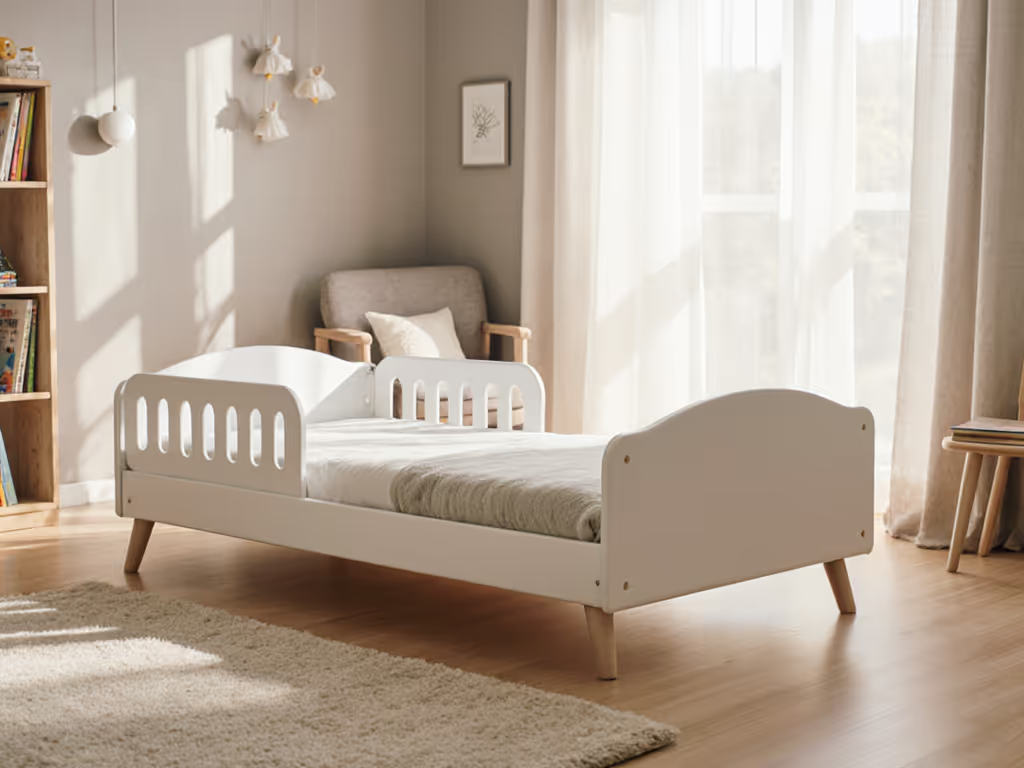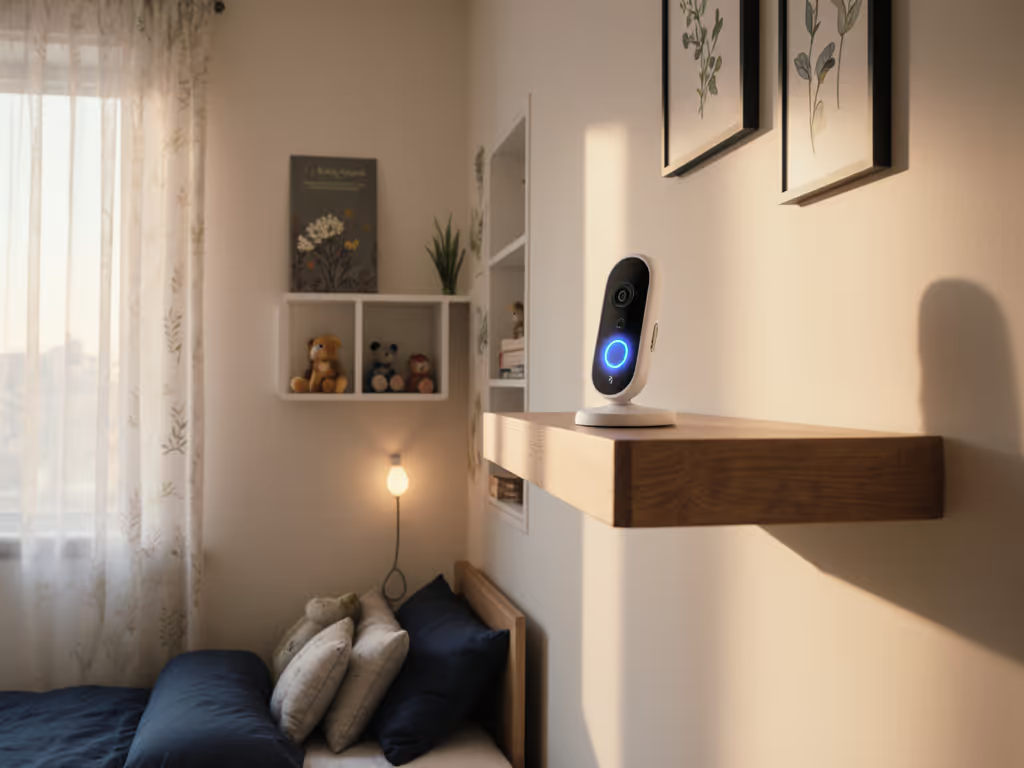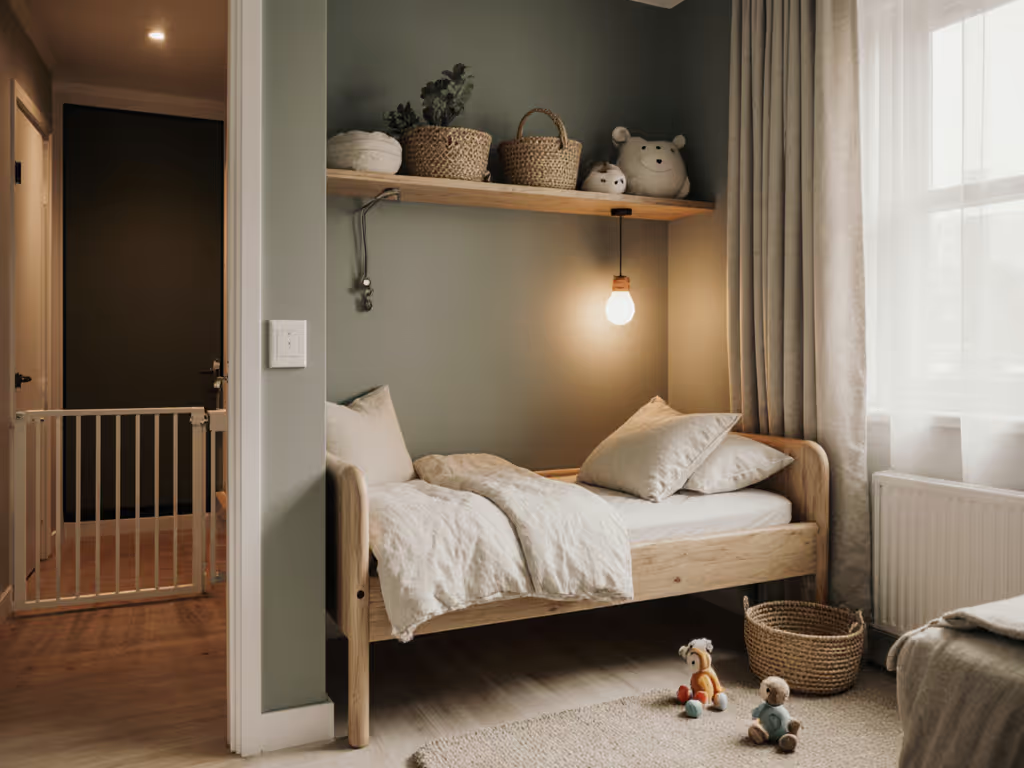
Bed Rail Types Compared: Toddler Safety vs Space Solutions
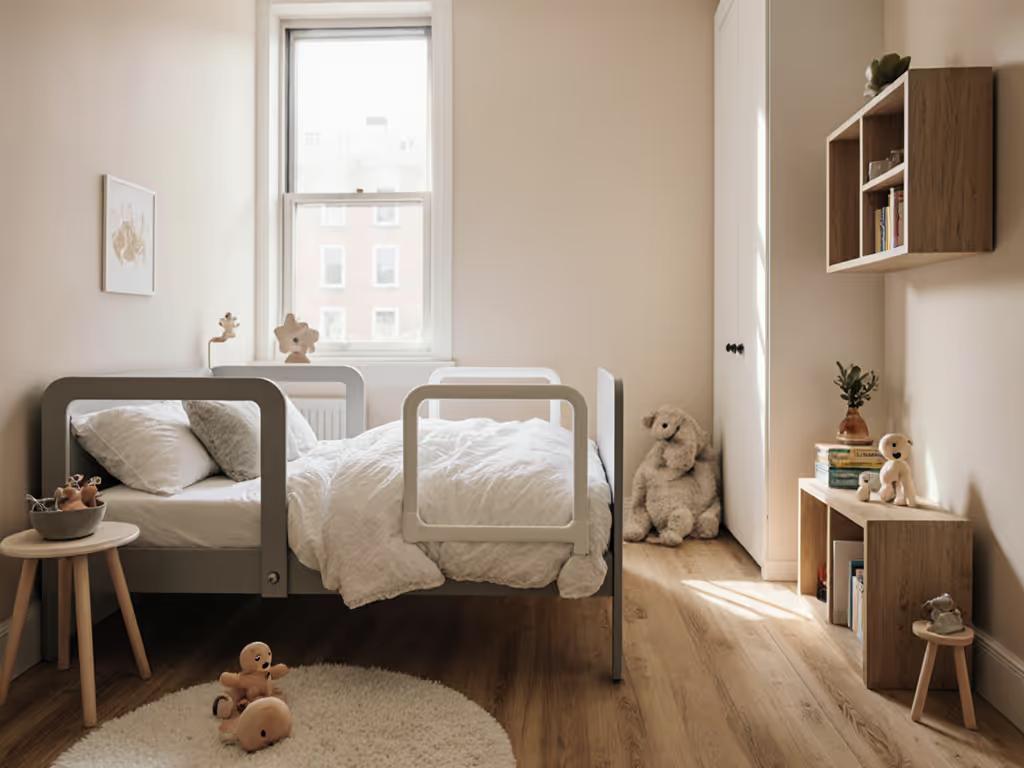
When your toddler makes the leap from crib to big-kid bed (often because you need that crib back for a new arrival), you face a critical bed rail types comparison. Will you choose traditional bars that look like hospital equipment, or a low-profile solution that disappears into your tight apartment? As someone who's tracked the total cost of ownership of every piece of nursery furniture I've owned, I'll show you how the toddler bed rail styles stack up not just for safety, but for space efficiency and long-term value. Because in a 700-square-foot apartment, every inch matters, and what remains when the toddler phase ends is what truly counts.
Why Bed Rail Type Matters for Small Spaces
Most parents focus solely on fall prevention (understandably so), but in cramped quarters, your bed rail choice impacts everything:
- Floor space: Bulky frames eat up precious square footage needed for storage or sibling beds
- Visual weight: Dark, industrial-looking rails make rooms feel smaller and more chaotic
- Room flow: Poorly positioned rails can block doors, closets, or pathways
- Future adaptability: What happens when your child outgrows the rail?
A well-chosen bed rail solves immediate safety concerns while preserving your room's functionality. If space is your primary constraint, browse our top space-saving toddler beds for layout ideas that pair well with compact rails. That's why I track the depreciation curve of these items. The best ones maintain value because they solve multiple problems at once.
Stack function, not dollars
Traditional Bed Rail Systems: Maximum Safety, Minimum Space Flexibility
Traditional bed rails (like those that come with convertible cribs) feature metal or wood frames that attach directly to the bed. They're secure, but in small spaces, they bring significant drawbacks:
Pros
- Most secure physical barrier against falls
- Firm attachment to bed frame prevents gaps
- Typically highest height (20+ inches)
Cons
- Space-killing footprint: Requires 4 to 6 inches between bed and wall for installation
- Blocks under-bed storage: Prevents use of low-profile bins
- Visual overload: Creates a 'caged' aesthetic that shrinks rooms
- Poor reusability: Often specific to one bed type
These rails work best when installed on a bed positioned away from the wall (something nearly impossible in under 800 square feet). I've seen parents in Brooklyn apartments try to squeeze them in, only to discover the rail blocked their toddler's closet access. The market liquidity on these is low too (most sell for under 30% of retail when parents realize they're single-purpose).
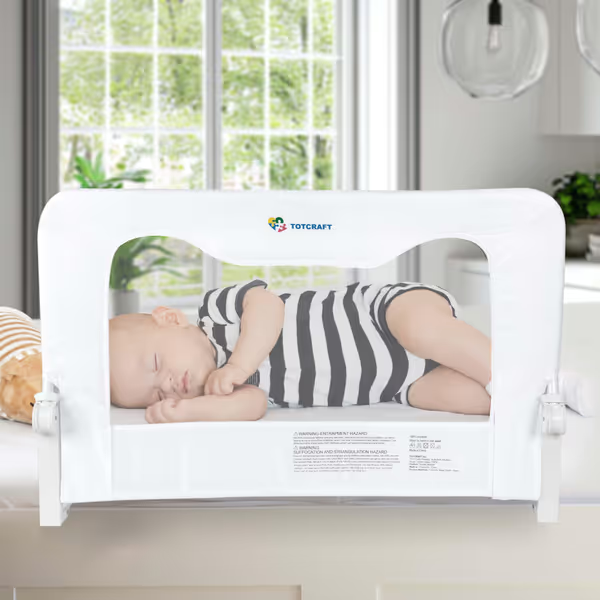
Toddler Bed Safety Rail
Bumper-Style Rails: Space-Saving Stealth Solution
Bumper-style rails like the hiccapop foam bed bumpers live under the fitted sheet rather than attaching to the bed frame. This category represents a paradigm shift for space-conscious parents.
Pros
- Zero installation footprint: No wall clearance needed
- Portable between beds: Take it to hotels or grandparents' homes
- No visual disruption: Maintains clean sightlines
- Easier to store: Folds flat when not needed
Cons
- Height limitations: Typically 5-7 inches (may not stop active rollers)
- Sheet dependency: Requires extra-deep fitted sheets
- No climb-out mechanism: Less independence for potty-training toddlers
The bed rail height considerations become critical here. While bumpers work perfectly for gentle sleepers, active rollers need more height. For apartment dwellers, this style often wins on parts availability, because if you lose one, replacement costs are minimal compared to a full rail system.
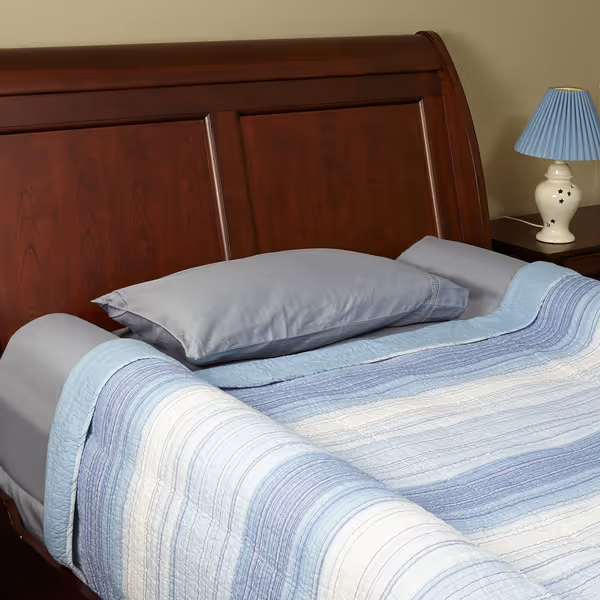
hiccapop Foam Bed Bumpers (2-Pack)
Low-Profile Fold-Down Rails: The Space-Optimized Compromise
Modern fold-down rails like the Munchkin Sleep Toddler Bed Rail bridge the gap between security and space efficiency with clever engineering.
Pros
- Smart height: Typically 16 to 18 inches (enough for most rollers)
- Fold-down functionality: Lets toddlers climb out independently
- Slim profile: Only requires 2 to 3 inches from wall
- Converts to adult use: Many work as temporary bed rails for elderly parents
Cons
- Installation complexity: Needs secure attachment points
- Higher upfront cost: Quality models start around $60
- Potential wobble: Cheaper versions may rattle during movement
The fold-down bed rail mechanisms in quality models eliminate the biggest drawback of traditional rails, they give toddlers safe independence while maintaining protection. For step-by-step setup and gap checks, follow our toddler bed rail installation guide. For parents in tight spaces, the ability to fold the rail down when not needed (like during daytime play) creates instant floor space flexibility.
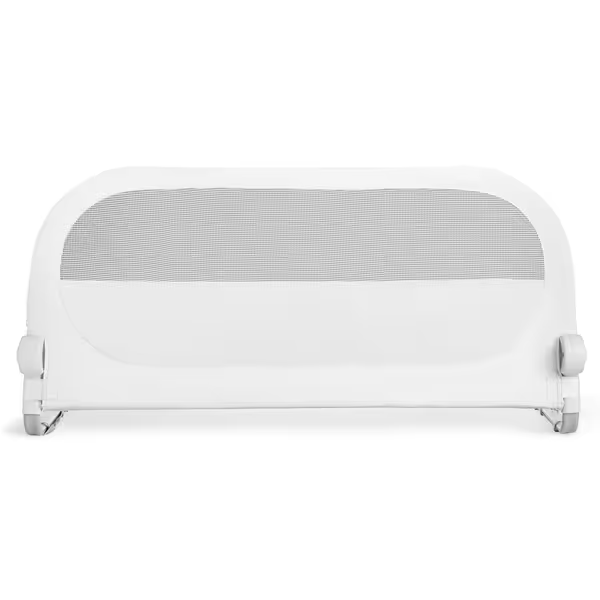
Munchkin Sleep™ Toddler Bed Rail
Space-Specific Comparison Framework
When I evaluate these options for small-space clients, I use a four-point framework that goes beyond basic safety:
1. Spatial Efficiency Score (1-5)
| Type | Score | Why |
|---|---|---|
| Traditional Rail | 2 | Requires significant clearance space; blocks under-bed storage |
| Bumper-Style | 5 | Zero footprint; works with wall-hugging bed placement |
| Fold-Down | 4 | Minimal clearance needed; folds flat against mattress |
2. Toddler Independence Factor
- Traditional rails often require adult assistance to lower
- Bumpers require climbing over (appropriate for potty-training)
- Fold-down models offer the best balance (easy self-release)
3. Total Cost of Ownership Analysis
Here's where my price-to-lifespan analysis expertise comes in. Most parents only consider purchase price, but these numbers tell a different story:
| Type | Purchase Price | Avg. Lifespan | Resale Value | True Cost/Month |
|---|---|---|---|---|
| Traditional | $45 | 8 months | $12 (27%) | $4.13 |
| Bumper-Style | $54 | 14 months | $28 (52%) | $1.86 |
| Fold-Down | $60 | 18 months | $38 (63%) | $1.22 |
The fold-down rail has the highest sticker price but the lowest monthly cost because it lasts longer and retains more value. I once paid more for a convertible frame I could barely afford. Two years later, it sold in a weekend for 70% of retail, funding the next size up. That contrast taught me to price future value, not just today's deal.
4. Compatibility Checklist
Before buying, verify these space-critical factors:
- Wall proximity: How many inches does your bed sit from the wall?
- Under-bed clearance: Will storage bins fit with the rail installed?
- Mattress height: Will the rail height work with your mattress thickness?
- Room traffic patterns: Does the rail block your child's access to nightlights or potties?
Making Your Space-Smart Decision
Your optimal choice depends on three spatial factors unique to your home:
If your bed must hug the wall (within 3 inches): Choose bumper-style. No traditional rail will fit, and fold-down models need clearance to operate.
If you need toddler self-access: Pick a fold-down model with a simple release mechanism. This supports Montessori-style independence while maintaining safety.
If multi-room portability matters: Bumper-style wins for travel or dual-residence families. They fold flat in carry-on luggage.
Also consider your child's sleeping style. Heavy rollers need more height than gentle sleepers, this is where the bed rail height considerations become make-or-break. If your child is a nightly tumbler, see our roll-proof toddler bed picks for extra-secure designs to pair with taller rails. When in doubt, overestimate height; you can always place a bumper underneath for extra protection.
The Final Verdict: Space-Optimized Toddler Safety
After tracking hundreds of small-space setups, here's my professional recommendation:
- For tight studios or shared rooms: Hiccapop bumper-style (best spatial efficiency)
- For growing toddlers needing independence: Munchkin fold-down rail (best long-term value)
- For non-renters with bed clearance: TotCraft traditional rail (best security)
The most valuable insight? Buy once, list once, sleep better in between. Your bed rail shouldn't be a temporary solution, it should function well now while maintaining enough value to offset your next purchase. In my years tracking the market liquidity of nursery gear, space-smart solutions consistently command premium resale prices because they solve universal problems.
Whether you choose traditional bars, foam bumpers, or low-profile fold-downs, prioritize solutions that maximize your square footage while delivering genuine safety. The best toddler bed rail styles don't just prevent falls, they preserve your sanity in close quarters. Because when the toddler phase ends (and it will), what remains is what you can resell, repurpose, or simply not trip over in the middle of the night.

